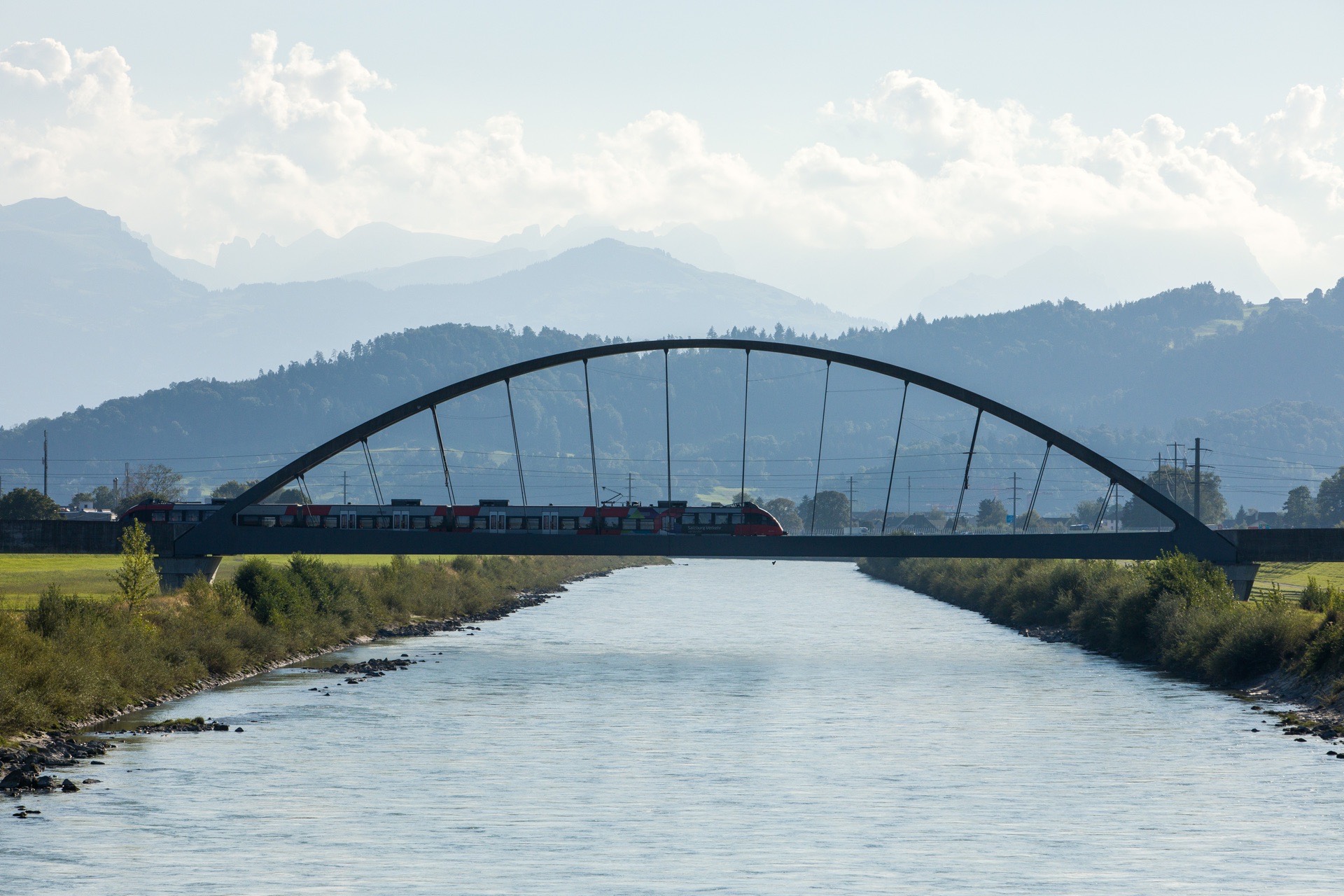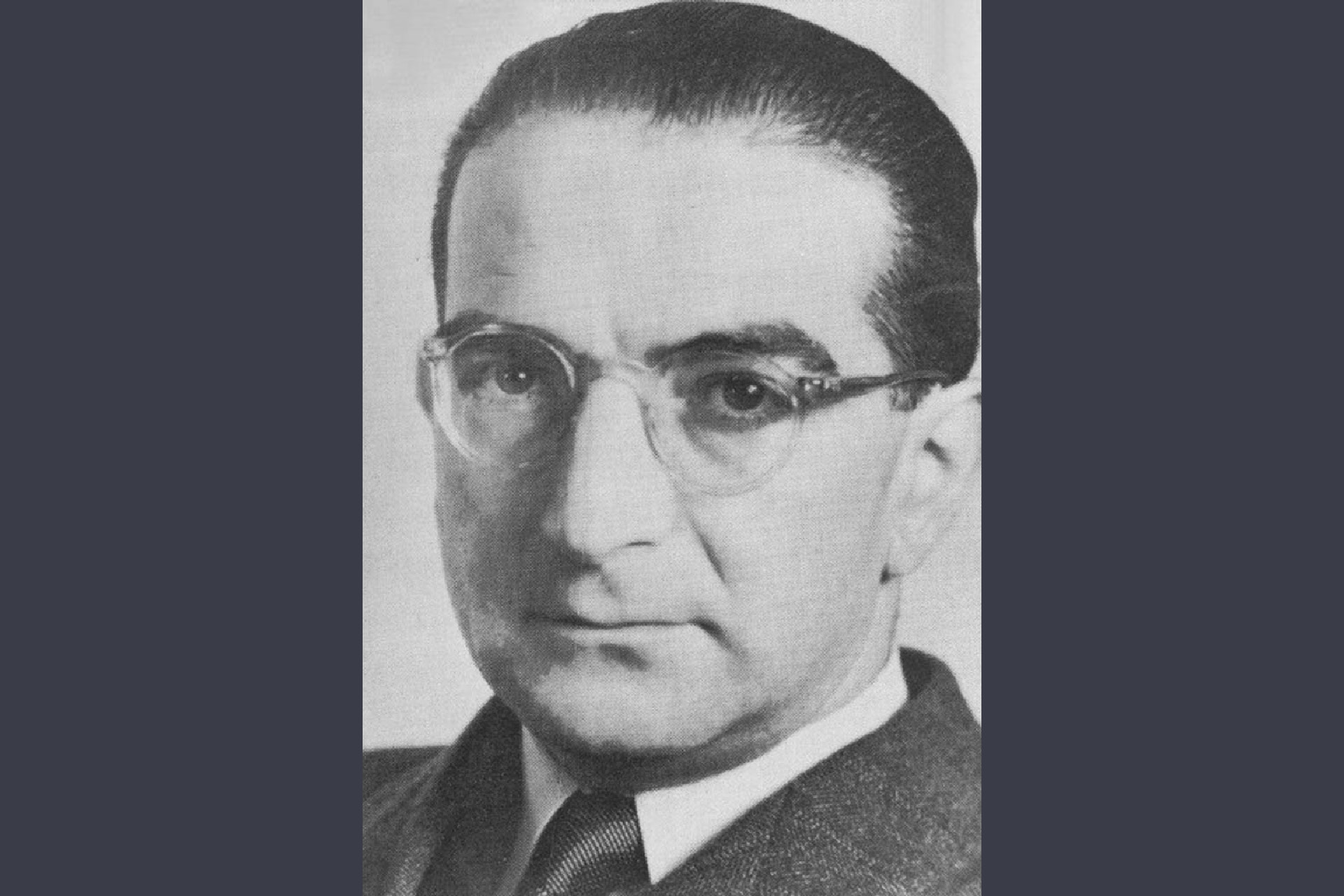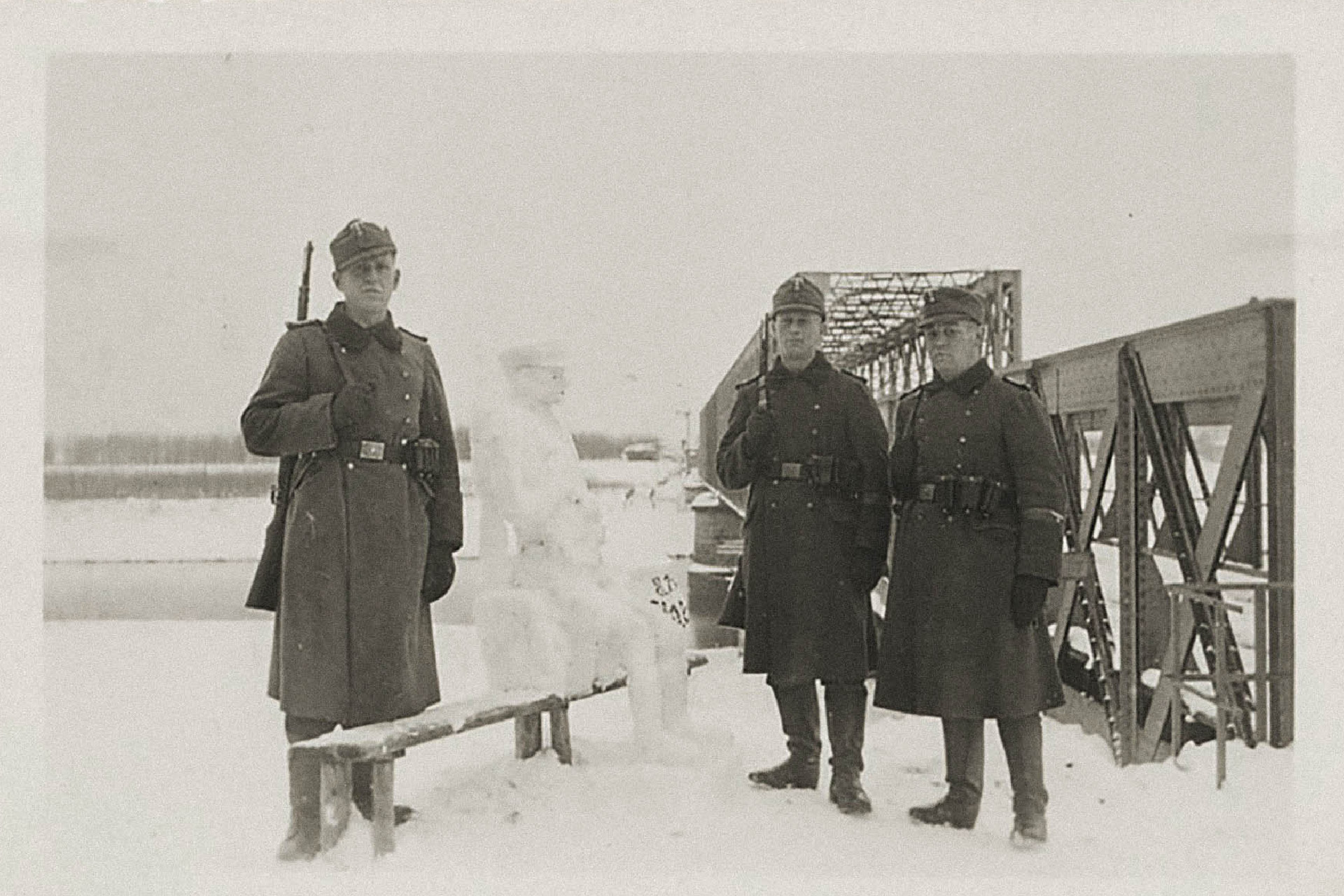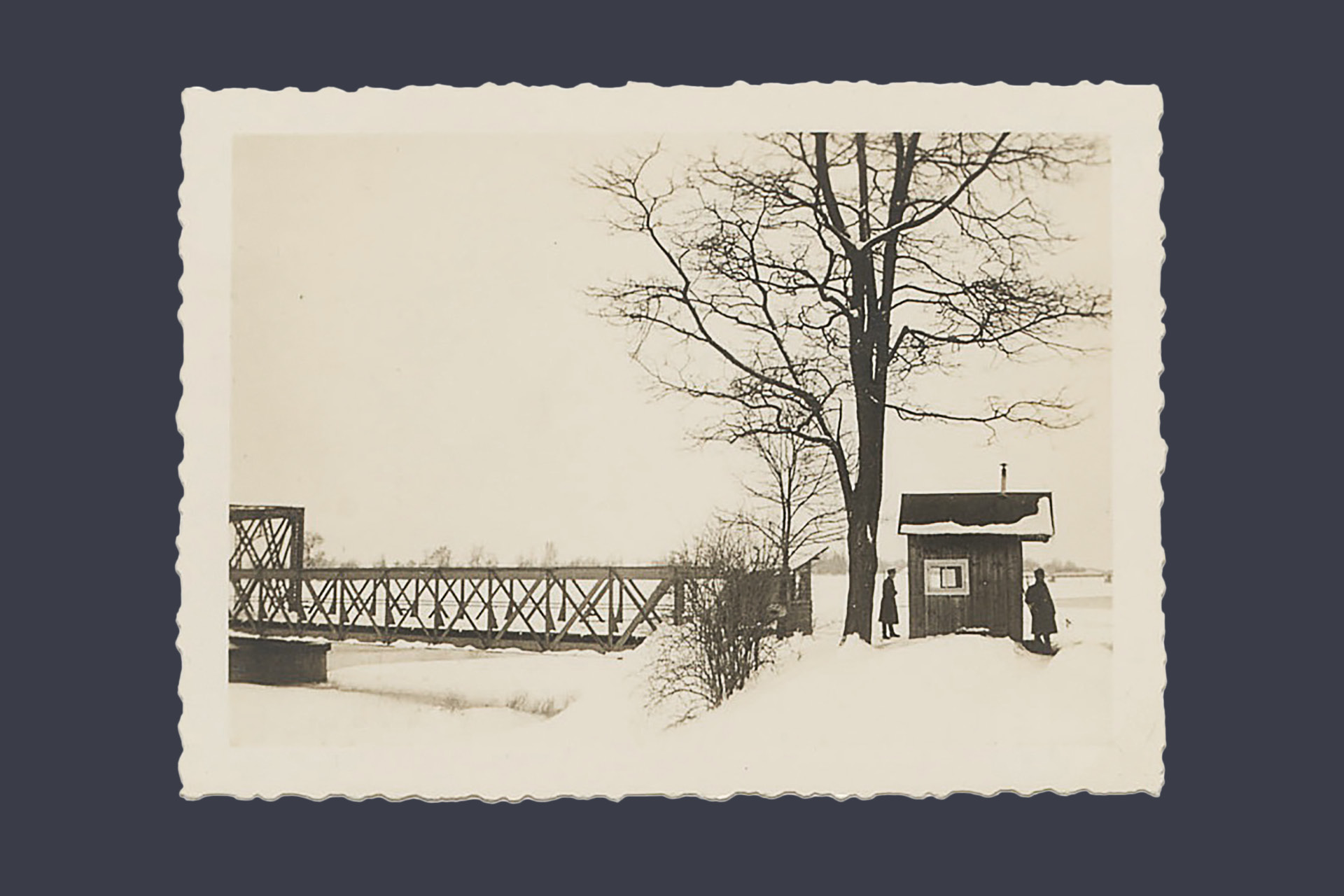Rudolf Kasztner> August 21, 1944
12 Rudolf Kasztner
On the bridge over the Rhine: Rudolf Kasztner negotiating with the SS
Höchst - Lustenau - St. Margrethen, August 21, 1944
In December 1944, 1368 people escape from the hell of Bergen-Belsen. By an unusual route, on a special train over the railroad bridge between Lustenau and St. Margrethen. Decades later, the story of how this happened is still the subject of bitter debate.
On August 21, 1944, Rudolf Kasztner, the representative of the Hungarian rescue committee, Vaadat Ezra VeHatzala from Budapest, and Saly Mayer, the former chairman of the Swiss Federation of Jewish Communities, met with the SS economic commissioner in Hungary, Kurt Becher, on the border bridge between Höchst and St. Margrethen. The same Kurt Becher who had previously been involved in the murder of 14,000 Jews as part of the so-called “partisan warfare” in the Soviet Union. For months now - in view of the approaching German defeat - the rescue committee has been trying a desperate gamble for the lives of the Hungarian Jews. Most of the Jews from the Hungarian provinces had been deported to Auschwitz and murdered since spring 1944. But thousands of Jews are still alive in Budapest.
In addition, the SS had brought 1684 Jews from Hungary to Bergen-Belsen as kind of pawns, or in the words of Adolf Eichmann “put them on ice”, and were now trying to do business with these human lives. Kasztner and Mayer pretend that they can procure industrial goods and raw materials from the US, while Becher demands the delivery of 10,000 trucks. Kasztner and Mayer have no mandate from the Americans to do so, and they do not know whether Becher is just juggling with them or perhaps already trying to improve his situation for himself and other high-ranking SS people for the time after a lost war. On the same day, 318 people are released to Switzerland via Basel.
These negotiations continued as late as November 1944. There was talk of individual ransoms and transfers to Swiss accounts. On December 7, 1368 Jewish concentration camp prisoners from Bergen-Belsen finally arrived in St. Margrethen.
Rudolf Kasztner emigrated to Israel after the war and made a career in the Social Democratic Party. But in 1952, his negotiations with the Nazis were publicly scandalized in a newspaper article and he was accused of being responsible for the deaths of many Jews. Kasztner initiated a defamation trial, which ended in a fiasco for him. Right-wing politicians in particular now used the case to accuse their Zionist-Social Democratic rivals of collaborating with the Nazis. Kasztner's statements at the Nuremberg trial, which were used in favor of Kurt Becher and other Nazi functionaries, contributed to the lasting damage to his reputation. In 1957, he was shot dead by three assassins outside his home. A year later, he was cleared of the accusation of collaboration by the Israeli Supreme Court.
Kurt Becher, on the other hand, was not prosecuted after the Second World War and established successful trading companies in Bremen and Hungary. In 1950, he wrote a “letter of condolence” to Saly Mayer's widow shortly after the latter’s death, making financial demands on her:
“Mr. Mayer told me that he had deposited in a safe the sum of SFr. 20,000 from the funds of the Joint for the benefit of my four children … in recognition of our humanitarian work at the time.” [1]
Jeanne Mayer did not reply to this.
[1] Hanna Zweig-Strauss, Saly Mayer (1882-1950): ein Retter jüdischen Lebens während des Holocaust. Cologne/Weimar/Vienna 2007, p. 228 and 355.
12 Rudolf Kasztner
On the bridge over the Rhine: Rudolf Kasztner negotiating with the SS
Höchst - Lustenau - St. Margrethen, August 21, 1944
In December 1944, 1368 people escape from the hell of Bergen-Belsen. By an unusual route, on a special train over the railroad bridge between Lustenau and St. Margrethen. Decades later, the story of how this happened is still the subject of bitter debate.
On August 21, 1944, Rudolf Kasztner, the representative of the Hungarian rescue committee, Vaadat Ezra VeHatzala from Budapest, and Saly Mayer, the former chairman of the Swiss Federation of Jewish Communities, met with the SS economic commissioner in Hungary, Kurt Becher, on the border bridge between Höchst and St. Margrethen. The same Kurt Becher who had previously been involved in the murder of 14,000 Jews as part of the so-called “partisan warfare” in the Soviet Union. For months now - in view of the approaching German defeat - the rescue committee has been trying a desperate gamble for the lives of the Hungarian Jews. Most of the Jews from the Hungarian provinces had been deported to Auschwitz and murdered since spring 1944. But thousands of Jews are still alive in Budapest.
In addition, the SS had brought 1684 Jews from Hungary to Bergen-Belsen as kind of pawns, or in the words of Adolf Eichmann “put them on ice”, and were now trying to do business with these human lives. Kasztner and Mayer pretend that they can procure industrial goods and raw materials from the US, while Becher demands the delivery of 10,000 trucks. Kasztner and Mayer have no mandate from the Americans to do so, and they do not know whether Becher is just juggling with them or perhaps already trying to improve his situation for himself and other high-ranking SS people for the time after a lost war. On the same day, 318 people are released to Switzerland via Basel.
These negotiations continued as late as November 1944. There was talk of individual ransoms and transfers to Swiss accounts. On December 7, 1368 Jewish concentration camp prisoners from Bergen-Belsen finally arrived in St. Margrethen.
Rudolf Kasztner emigrated to Israel after the war and made a career in the Social Democratic Party. But in 1952, his negotiations with the Nazis were publicly scandalized in a newspaper article and he was accused of being responsible for the deaths of many Jews. Kasztner initiated a defamation trial, which ended in a fiasco for him. Right-wing politicians in particular now used the case to accuse their Zionist-Social Democratic rivals of collaborating with the Nazis. Kasztner's statements at the Nuremberg trial, which were used in favor of Kurt Becher and other Nazi functionaries, contributed to the lasting damage to his reputation. In 1957, he was shot dead by three assassins outside his home. A year later, he was cleared of the accusation of collaboration by the Israeli Supreme Court.
Kurt Becher, on the other hand, was not prosecuted after the Second World War and established successful trading companies in Bremen and Hungary. In 1950, he wrote a “letter of condolence” to Saly Mayer's widow shortly after the latter’s death, making financial demands on her:
“Mr. Mayer told me that he had deposited in a safe the sum of SFr. 20,000 from the funds of the Joint for the benefit of my four children … in recognition of our humanitarian work at the time.” [1]
Jeanne Mayer did not reply to this.
[1] Hanna Zweig-Strauss, Saly Mayer (1882-1950): ein Retter jüdischen Lebens während des Holocaust. Cologne/Weimar/Vienna 2007, p. 228 and 355.




